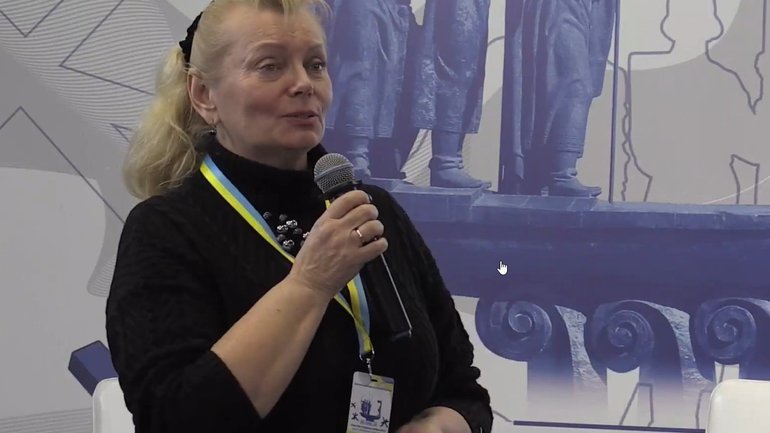Russians planned to destroy St. Sophia of Kyiv in the first days of the war, - Nelya Kukovalska

Director General of the Reserve Nelya Kukovalska told it to the participants of the Kyiv International Scientific And Practical Conference "Cultural Heritage in War: Protection, Preservation and Restoration". Facebook page of the Reserve "St. Sophia of Kyiv".
The Kyiv Department of Cultural Heritage Protection organised the international conference, and the main partner is the Family Investment Company Dovgiy Family Office.
"I was warned by very high government offices that there is a great threat of destruction of St. Sophia. It was extremely difficult to bear this mentally. We understood why the aggressor targeted St. Sophia because it represents the foundations of our people - statehood, spirituality, culture, and education. To destroy it is actually to destroy the Ukrainian nation," said Ms Nelya.
Employees of the Reserve began to act immediately. It should be noted that St. Sophia of Kyiv is a UNESCO site, so it could be protected from outright Russian barbarism primarily by wide publicity around the world.
"Together with the Ministry of Culture, we have started sending relevant petitions to colleagues worldwide. We even reached Latin America and Australia," recalls Nelya Kukovalska.
Since it was clear that there was little to save St. Sophia from a direct missile strike, experts began to urgently study the experience of protecting historical structures during World War II and other armed conflicts. Nelya Kukovalska organized a working group consisting of engineers and designers of the Reserve, connecting a large group of experts.
Projects for the construction of a large external wall had to be abandoned due to the possible negative impact of construction work on archaeological sites near St. Sophia. In the end, the experts decided to strengthen the most vulnerable objects of the reserve with sandbags, namely, some buildings with unstable construction and rooms with important artistic and architectural values. In total, about 90 thousand museum exhibits were packed and reliably protected. By the way, the expediency of this approach was later confirmed by ICOMOS and UNESCO experts.
Now, in addition to attacks by Russian missiles and Iranian drones, Ukrainian Cultural Heritage faces another danger - rolling power outages.
"I'd like to note the humidity of the room. This will now be a problem for all museums and attractions. Special equipment does not work due to a power outage. And capillary suction of moisture into walls and foundations occurs almost instantly. Our experience in using the BioDry system is irreplaceable here. It does not use electricity but is powered by the Earth's electromagnetic waves. But this system is very expensive. It was put to us by patrons," said Nelya Kukovalska.
During the conference, museum workers and government officials discussed solutions to this problem. Foreign partners will also be involved for this purpose.









